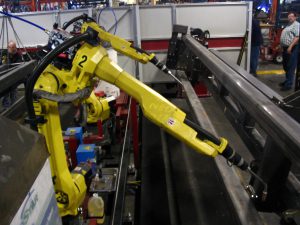 Metal fabrication, in some form, has existed for centuries — even millennia, depending on the definition being used. There is an incredible history and plenty of intriguing information and stories available. Last week, we began our list of fabrication fun facts, and during our research, found more than a single blog could easily hold. So this week, we’ve created a part two, just so we could share the other fascinating details we’ve collected.
Metal fabrication, in some form, has existed for centuries — even millennia, depending on the definition being used. There is an incredible history and plenty of intriguing information and stories available. Last week, we began our list of fabrication fun facts, and during our research, found more than a single blog could easily hold. So this week, we’ve created a part two, just so we could share the other fascinating details we’ve collected.
More Fun with Fabrication Facts
- The Earth’s atmosphere is all that stands between two uncoated pieces of metal just bonding themselves together with nary a welder in sight. Fortunately, our atmosphere creates a layer of oxidized material that always manages to make its way in between the two pieces to be welded, which prevents them from fusing without the help of a knowledgeable welder.
- When Russian cosmonauts were launched into space in 1969, they were not just there to explore. They were sent with the materials to make the world’s first attempt at metal fabrication — in this case, welding — outside of our atmosphere. This work was important as it provided details we would later need to effectively build the International Space Station.
- Many people outside of the metal fabrication industry probably don’t realize that welding is one of the few fabrication techniques that can be performed both on land, and underwater. Better yet, both wet and dry welding can be performed under the sea! The current records for underwater welding depth are 1075 feet for a dry weld, and 2000 ft for a wet weld, which was performed by the U.S. Navy.
- Automation has been a hot topic in metal fabrication over the last few years, in particular. But automation in fabrication and manufacturing has existed for more than 50 years. In 1961, General Motors was the first to install an industrial robot in a car manufacturing plant, which was used for spot welding. Unlike the many fairly compact robots now found in manufacturing environments, GM’s “Unimate” weighed more than two tons.
- Unsurprisingly, metal fabrication techniques have become much more efficient over the last century than they once were. Take, for example, NYC’s famous Empire State Building, which required 60,000 tons of steel to complete by the time it was finished in 1931. In comparison, the Burj Khalifa was completed in 2009 with just 43,000 tons, even though it is the world’s tallest building!
Interested in learning more about EVS’s precision sheet metal capabilities for your next project? Get an online quote, or call 1-888-9EVSMet.





